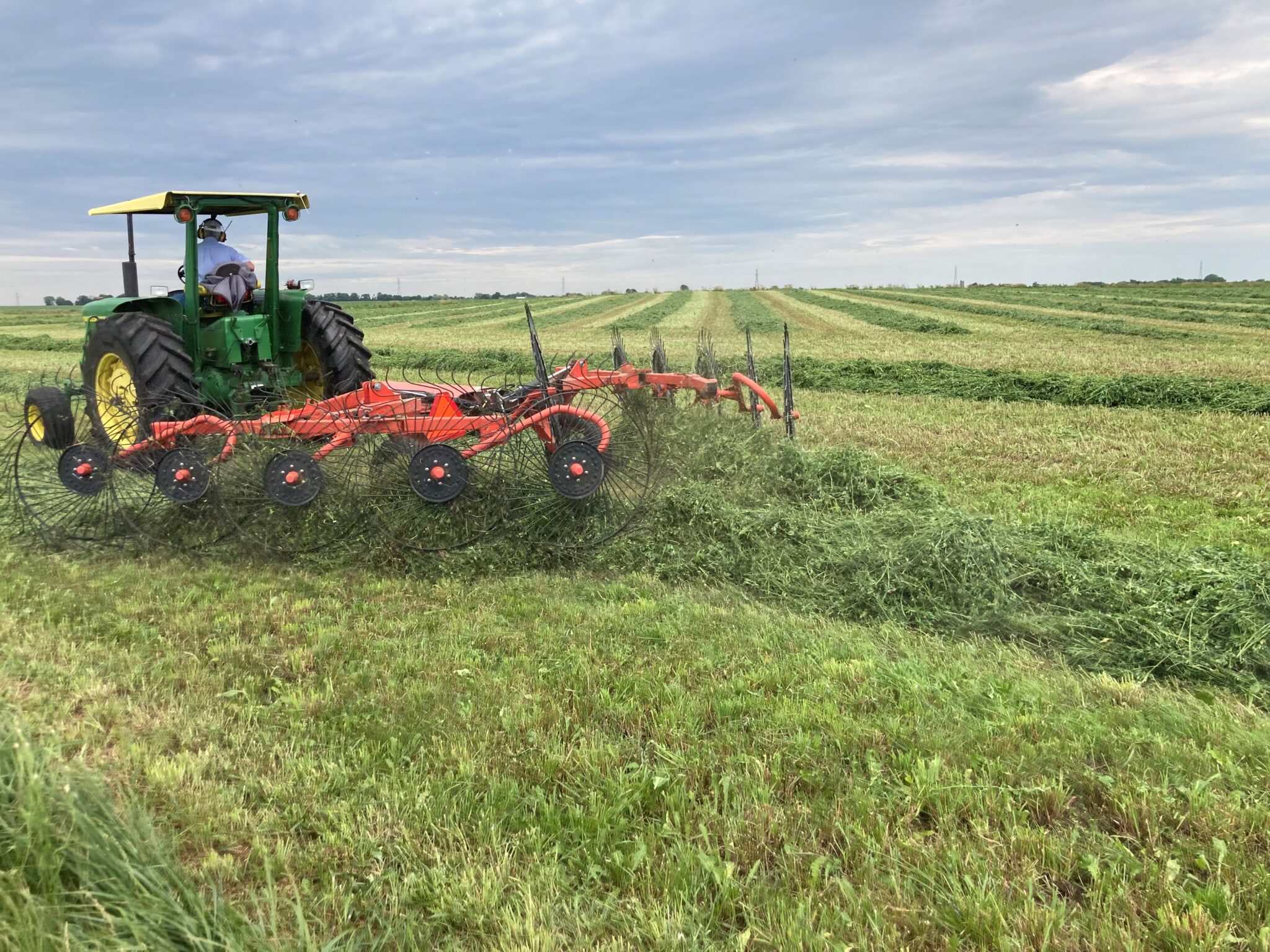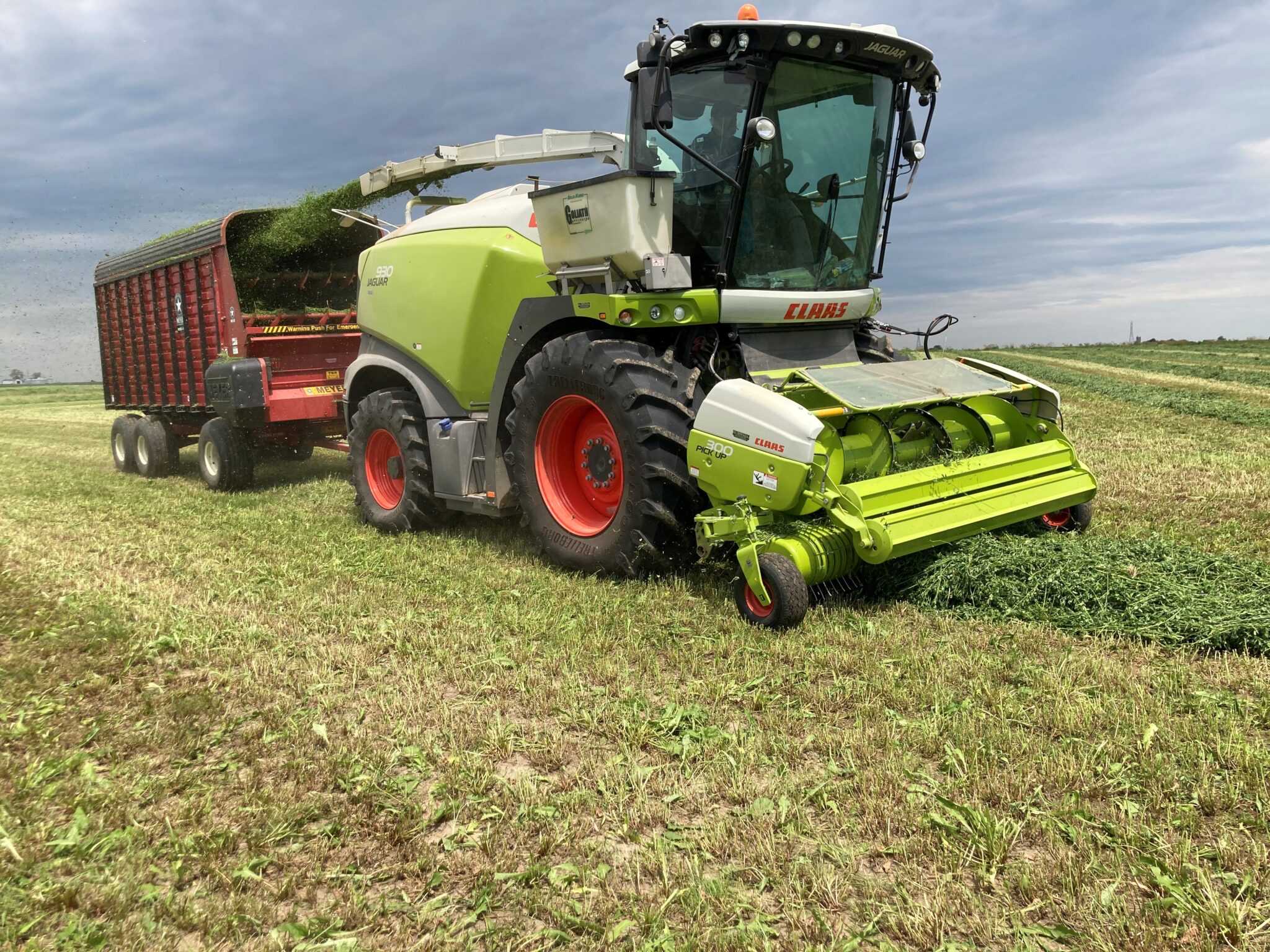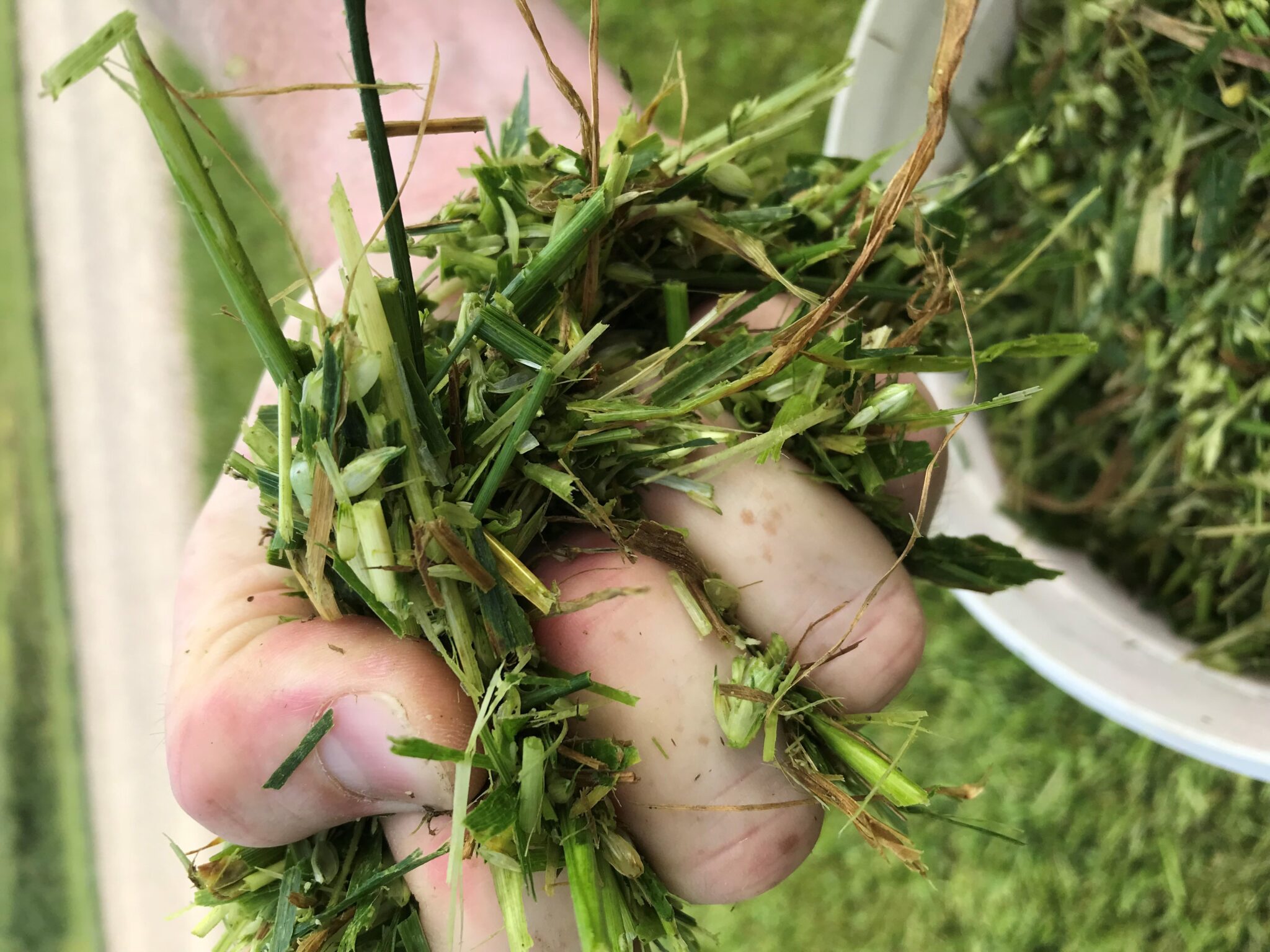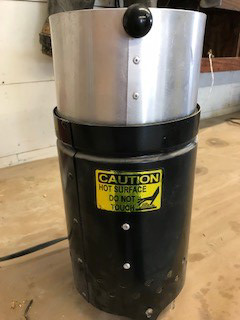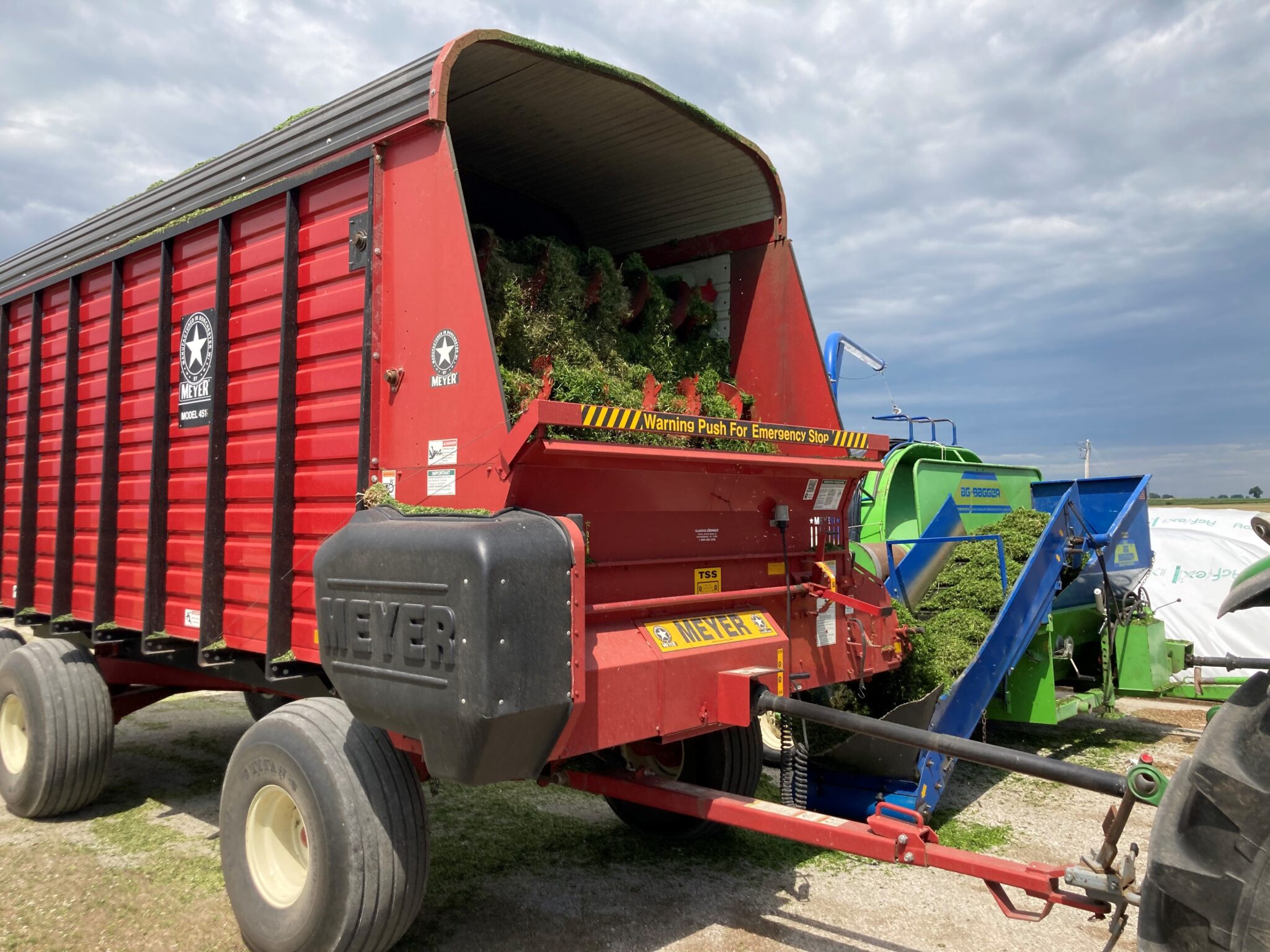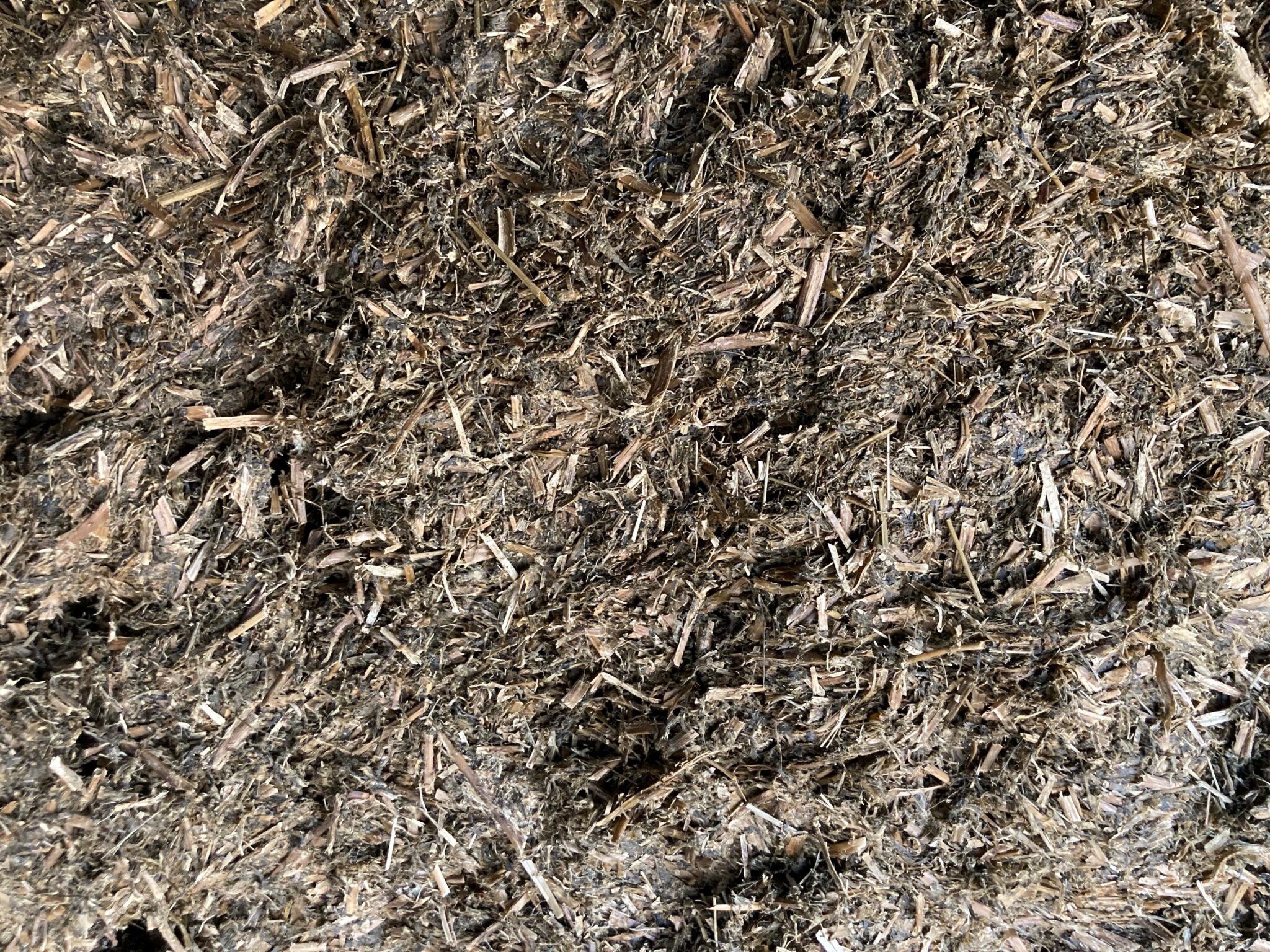It has been my observation that many livestock producers that once used tower silos have transitioned to using plastic bags for fermenting forages. The following photographs, videos, and table depict management practices that need to be followed for successful fermentation of alfalfa when a bagger is used.
-
-
- When cutting the crop, use a mower-conditioner so it crimps the stem every third or fourth inch up and down the stem without bruising leaves.
- Swaths can be merged together to form a windrow that meets the capacity of the forage chopper used. In this picture, a wheel rake is used to do the merging. Don’t rake so aggressively that excessive soil gets in the windrow.
- Set the theoretical length of cut on the chopper near 3/8 inch for forage grasses and legumes. A
video segment of a chopper harvesting alfalfa in the windrow is at: - Take a chopped representative sample in your hand and squeeze very hard. If moisture oozes from the sample, the windrows need to dry more.
- Pictured is a small, forced-air oven used to determine if a representative chopped sample is in the target range of 65 percent moisture (35 percent dry matter).
- The chopped forage is unloaded form the unloading wagon into the small elevator that takes it to the packing component of the bagging implement. Video clips can be viewed at:
 
- Dr. Nick Minton, Purdue Extension Beef Systems Specialist, stands by a tube that was in the process of being filled to capacity. Note the backstop in the right upper background (light green).
- Alfalfa silage made at a correct length of cut, well packed in silage bag, and allowed to ferment for a month.
- When cutting the crop, use a mower-conditioner so it crimps the stem every third or fourth inch up and down the stem without bruising leaves.
BAGGED CHOPPED SILAGE Practice Reason Benefits Minimize drying time. Harvest at moisture 55-65% (dry matter 35-45%) Reduces respiration. Achieves good density. Reduces nutrient and energy losses. Provides more sugar for fermentation. Lowers silage pH. Lessens chance of clostridia producing butyric acid. Chop at correct TLC1. Fill silo quickly (requires approximately 4 hp at the bagger for every 10 hp on the chopper) Minimizes exposure to oxygen. Reduces nutrient and energy losses. Provides more sugar for fermentation. Reduces silage temperature and heat damage. Has a faster pH decline. Improves aerobic stability. Lessens protein solubilization. Lessens chance of Listeria. Monitor stretch of plastic bag. Achieves good density. Avoids over stressing plastic. Reduces losses. Avoids catastrophic rip in the bag. Leave silage bag sealed for at least 14 days. Allows for complete fermentation. Lowers silage pH. Provides more fermentation acids. Improves aerobic stability. Lessens chance of Listeria. Unload 2-6 in/day (more in warm weather). Keep surface smooth. Limits aerobic deterioration. Reduces spoilage. Keeps silage temperature lower for improved palatability. Discard deteriorated silage. Avoids animal health problems. Prevents toxic poisoning and mycotic infections. Prevents listeriosis and clostridial toxins. 1TLC=theoretical length of cut (a chopper setting). Chop haycrop silage near 3/8 inch TLC; chop silage at 1/4 inch TLC, or 3/4 inch TLC with a roll processor. See The Pen State Separator, page 249. - Best Management Practices” details for bagged chopped silage from Purdue Forage Field Guide –ID-317. Preference is to have fermentation time of 28 days.
Making quality silage is a process that requires full attention from harvesting a quality crop, chopping at the right length at the correct moisture, and packing it quickly so fermentation can begin immediately.
-



